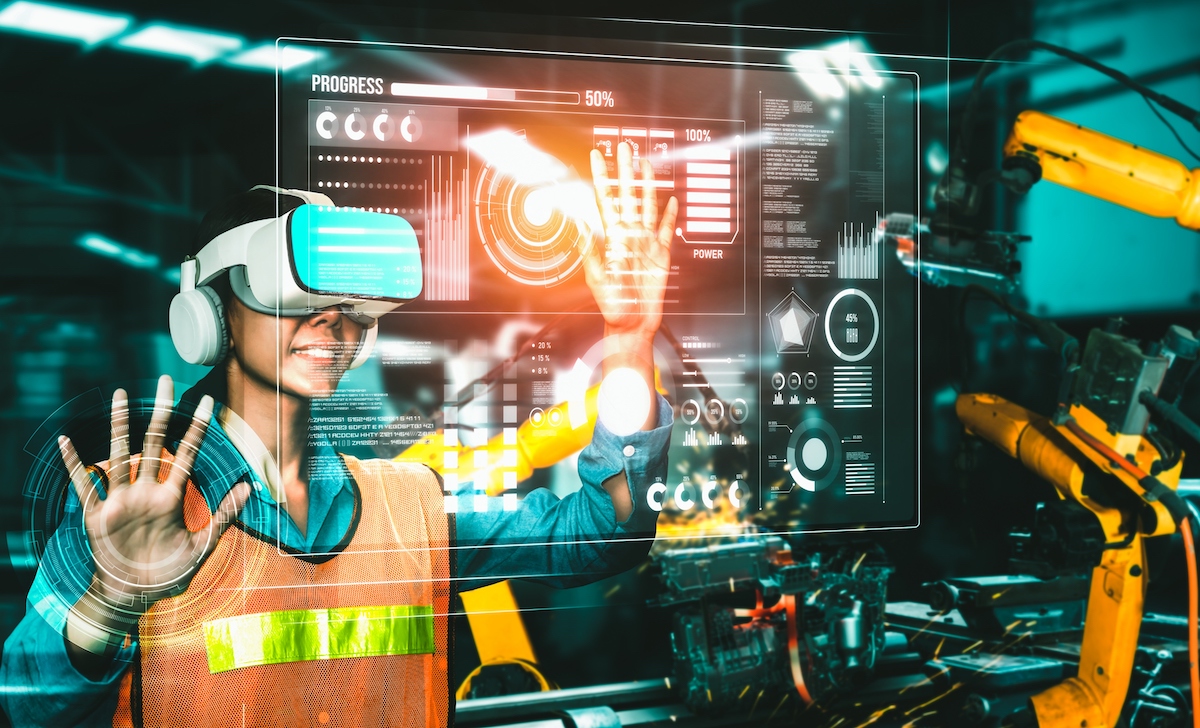Beyond The Buzz
Are factory floors the next hub for immersive experiences?
In a world where 64% customers are more likely to recommend your brand if they have a great experience, shouldn’t that journey begin closer to the source? When we think of factory floors, immersive experiences aren’t the first things that come to mind. But that is about change. An exciting future is on the horizon, powered by hyperautomation, collaborative environments and engaging interactions. And this paradigm shift isn’t just aimed at end-customers. It’s also set to transform how employees work and innovate. Let’s delve a little deeper.
Forget boring product launches
Imagine being able to interact with prototypes in a virtual space and experience product features way before it hits retail shelves. This is how new-age experience centers are reinventing how customers discover products for the first time.
A print equipment production company recently launched a CX center to accelerate co-creation between their end-customers and the partner ecosystem. The immersive experience hub is aimed at EV makers who are in the market for metal binder jetting 3D printers, but there’s more to it than that. The same automated, digital-first approaches that power these next-gen experiences are also the key to cost savings, reduced carbon emissions and co-development of better; more innovative products.
Companies have been going all out and investing big bucks to provide personalized experiences to their customers.
The ideas range from something as basic as a soda can to advanced tech like a virtual reality (VR) headset. So, isn’t it only fair for the engineers and workers on the factory floor to also get the same personalized treatment through assisted work environments?
Welcome to a new age of collaboration
Experience hubs in manufacturing are breaking down disciplinary silos and pushing boundaries in collaboration. When a luxury automobile manufacturer initiated the global rollout of its omniverse earlier this year, it marked the introduction of a first-of-a-kind tech platform where 3D design and DevOps teams would work across multiple software suites simultaneously, in a shared virtual space, from different corners of the world.
But with experience hubs, the push for innovation doesn’t stop there. While cross-disciplinary teams join forces to enhance product quality in manufacturing, there’s upskilling happening within the existing workforce and partner ecosystem as well.
Raise the talent bar
Experience centers are enabling manufacturing companies to offer hands-on skilling sessions for their employees and partners.
The result is a talent pool of professionals that’s well-equipped to harness technologies such as artificial intelligence (AI), robotics, augmented reality (AR), virtual reality (VR) and mixed reality (MR), and stay ahead of emerging trends in the manufacturing landscape.
In fact, a global manufacturer of original equipment for the automotive and aerospace industries has already implemented experiential learning. They recently launched an experience center to provide technical information and training for their retailer and mechanic partners.
Connect the dots, faster than ever
When it comes to making immersive experience hubs more commonplace in manufacturing, 5G will play a pivotal role. And in the scheme of prioritizing worker safety and enhancing operational efficiency, several organizations have embraced the tech to get the first mover’s advantage. With continuous advancements in connectivity, 5G can power private networks within factories with low latency, high capacity and increased bandwidth. These features open up new possibilities for fast-paced AR/MR, robotics and automated guided vehicles (AGV) operations.
In conclusion
With changing workforce dynamics, new-gen experience hubs are dynamic catalysts revolutionizing the manufacturing industry. They ignite innovation, elevate customer experiences and empower the workforce. But thriving in this paradigm means putting strong security protocols in place. To that end, concerted efforts by R&D and enablement teams will go a long way in safeguarding critical digital information from falling into the wrong hands.
About the author
This article was written by Ashish Kakani, Senior Director, Engineering, Industrial Sector and originally it was published here.



